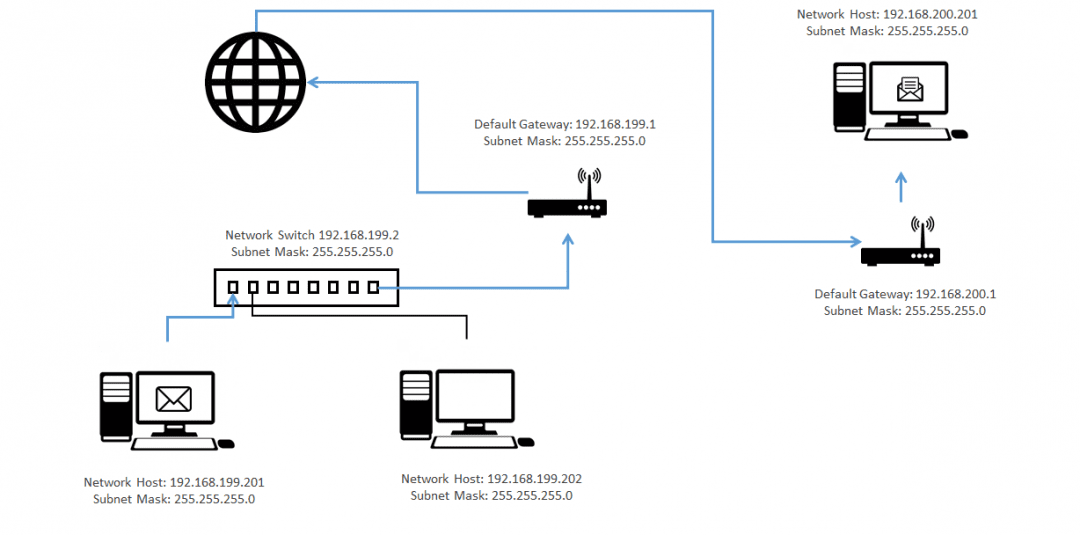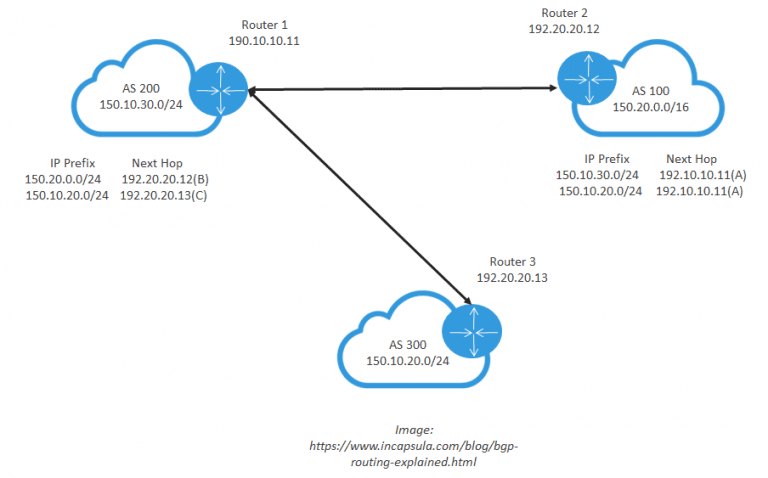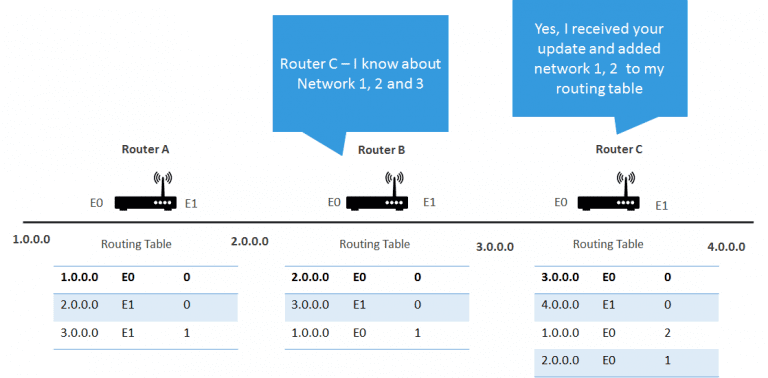Part 4 of 5:Introduction to Networking – Basic Routing Principles
- Megan
- Latest News
- 0 likes
- 4659 views
- 0 comments
In our previous blog posts, we have discussed assigning IP addresses to hosts within our network as well as the relevance of subnetting. In this blog, we will discuss basic routing principles that apply to networks.
If you recall, we added routers to our physical network to segment the network, this allows us to limit the amount of traffic that will be handled by one large network made up of only switches.
So when we mention routing protocols, we should think about routing, and routing, in a nutshell, is basically the process of moving a packet from one device to another on a different network, and this is done by, you guessed it, the router.

Each packet has two addresses, namely Source Address and Destination Address. The source address is the address from where the packet originates and the destination address is where the packet is going. Where routing comes into play, is the way the packet gets there!
For a router to be capable of routing packets, it must know the following information:
- The destination address
- Neighbouring routers, which allows it to learn about remote networks
- Possible routes to remote networks
- The best route to each remote network, and
- How to maintain and verify routing information
A router can learn about remote networks from neighbouring networks or from an administrator. The router can then build a routing table (a map of the internetwork) that describes the path of how to find remote networks. If the network is directly connected, then it already knows the path, but if it isn’t directly connected, it must use one of two ways to learn how to get to the remote network. One way is known as static routing, which entails the network administrator hand-typing all the static routes and network locations into the routing table and the other method is known as dynamic routing.

In dynamic routing, the protocol used on one router communicates with the same protocol running on neighbouring routers. The routers then update each other about all the networks they know about and place this information into the routing table. Should a change occur in the network, the dynamic routing protocol ensures that all routers are informed about the change and automatically update the routing protocol.
Dynamic routing is divided into IGP and EGP.
EGP or Exterior Gateway protocol uses the BGP Protocol. BGP or Border Gateway Protocol is a standardized exterior gateway protocol designed to exchange routing and reachability information between autonomous systems on the Internet. The protocol is often classified as a path vector protocol but is sometimes also classed as a distance-vector routing protocol.
What is BGP?
In Layman’s terms, BGP is the routing method that enables the Internet to function. Without it, you wouldn’t be able to do a google search or send an email.

The BGP decision making mechanism analyses all the data and sets one of its peers as the next stop, to forward packets for a certain destination. Each peer manages a table with all the routes it knowns for each network and propagates that information to its neighbouring AS. In this way, BGP allows an AS to collect all the routing information from its neighbouring AS and “advertise” that information further. As there usually exist more than one route to a given destination, BGP is responsible for determining the most suitable route according to the information collected and an organization routing policy, which is based on cost, reliability, speed etc.
IGP or Interior Gateway Protocol is a type of protocol used for exchanging routing information between gateways within an autonomous system. This routing information can then be used to route network layer protocols like IP and can be divided into distance vector routing protocols and link-state routing protocols.
Distance Vector Routing Protocols uses the Bellman-ford algorithm. In these protocols, each router does not possess information about the full network topology. It advertises its distance value calculated to other routers and receives similar advertisements from other routers unless changes are done in the local network or by neighbours. Using these routing advertisements, each router populates its routing table. In the next advertisement cycle, a router advertises updated information from its routing table. This process continues until the routing tables of each router converge to stable values.
RIP or Routing Information Protocol is one of the oldest distance-vector routing protocols which employ the hop count as a routeing metric. RIP prevents routing loops by implementing a limit on the number of hops allowed in a path from the source to the destination.



Comments
View Comments